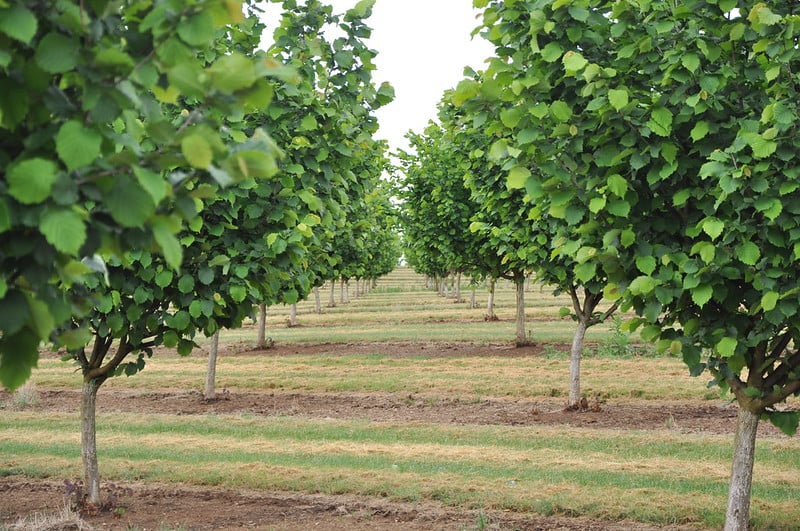The 2020-2021 period is on track to become the second driest on record, behind only the extreme drought years of 1977 and 1976. In response to low flows on the American, Feather, Sacramento, and Yuba rivers, in late May the U.S. Bureau of Reclamation eliminated agricultural water allocations through the Central Valley Project—surprising few, but disappointing many.
Many growers face tough choices in the season ahead, and larger questions about the future of farming when most predictions are for more frequent and severe drought. In combination with a challenging regulatory environment, the prospect of ever-tougher conditions demand that the community pursue short-, mid-, and long-term strategies to adapt.
Short term: cool, cover, fallow
There are some steps growers can attempt immediately to minimize evaporation and help the soil retain moisture. Depending on crop, location, and other particulars, these strategies might include:
- Adding mulch or cover crops to cover and cool soils
- Pruning—depending on the particular crop—to minimize unnecessary water loss from leaves
- Altering trellis types or row orientation to reduces sun exposure
- Increasing organic matter in soils to boost water holding capacity

Some operations may need to decide early whether and how to prioritize some areas of the business over others. “At last resort, some growers are fallowing annual crop ground to save water for their orchards,” says Danny Merkley, director of water resources with the California Farm Bureau Federation . “I know of others who are ripping out older trees in orchards and digging retention ponds that will be used for irrigation."
Nathan Cardella owns Cardella Winery, a diverse operation that typically grows annual crops and nuts as well as wine grapes. “In the fall we made plans to scale back on our annual crops due to water shortages and increased expenses, says Cardella, who’s based in Mendota. “We left 500 acres typically designated for tomatoes fallow. We still will not have adequate well water supply for our grapes and nuts.”
Mid term: optimize irrigation strategy
For farms that have already made the switch to more efficient drip or micro-sprinkler systems, the next phase in building drought resiliency may come in the form of investments to optimize those systems: for example, through early detection and correction of drip system issues.
“More precise irrigation systems that are data-driven have increased crop production, help to cope with dry years, and provide water quality benefits,” says Kelly Huff, district manager for the Dixon Resource Conversation District.
Sarge Green, water management specialist with the California Water Institute at California State University, Fresno, agrees. In his view, the combination of micro-irrigation with advanced soil and plant moisture measuring techniques can help ensure that all available water applied to crops is contributing to better yields.

Crops like grapes and tree nuts are resilient enough to survive dry years, but the ability to closely monitor plant stress and fine-tune irrigation strategy will go a long way toward protecting yields—both this season and next. In grapes, that means especially careful consideration of harvest timing. In almonds, experts like David Doll recommend applying available water as a proportion of water use. “Very simply, this means that if only 30% of the water is available, the orchard should be irrigated at 30% of the crop’s evapotranspiration for the entire season. This strategy has been shown to be the easiest and one of the more effective strategies to manage a drought situation,” Doll says.
Huff also recommends that growers seek out local resources for help assessing their irrigation strategy and deciding where to invest in technology to further improve efficiency. “Taking advantage of drought education and assistance programs when they become available will also help growers navigate the challenges of another dry year.”
USDA NRCS field offices can often offer one-on-one support in developing a drought plan, as well as technical and financial assistance, depending on the grower’s situation. The state Department of Food and Agriculture and university extension program produce extensive fact sheets and training resources, and some local resource conservation districts offer Mobile Irrigation Labs (MIL) for free on-site evaluations. Options do vary by region—but in any part of the state, there should be no need for any grower to go it alone.
Long term: farm choices in context
In the big picture, water challenges in the West are more complex than a simple lack of precipitation, and more extensive than the occasional bad year. We rely on the slow melt of the snowpack to fill reservoir capacity, and to recharge groundwater supplies. Not only is less snow falling, explains Green, what does fall is evaporating from forest canopies quickly rather than collecting on the ground to melt slowly in the spring.
Recent wildfires complicate the situation further, Green points out. Heat from intense wildfires seals the top layer of soil, preventing water from infiltrating to recharge groundwater supplies. Instead, “the water runs off faster, picks up ash and other loose materials as it enters streams.”
Many experts agree that capturing and storing more water will be key to mitigating impacts of future drought. Alvar Escriva-Bou, research fellow at the Public Policy Institute of California, says that increasing water capture, use of aquifers for water storage, and groundwater recharge solutions are all being explored.

While policy debate over the best water investments continues, growers are doing their best to plan for the long haul on their own operations—investing in infrastructure and technology, or making strategic choices to switch crops or varieties. Green sees some orchard operators dealing with salinity issues by switching to salt-tolerant pistachios, while some wineries are opting for drought-resistant rootstock or developing systems to use recycled water.
“Growers are an optimistic and inventive group of people who always face challenges head-on,” Danny Merkley says. Green agrees. “Farmers are innovators. I anticipate unique solutions being invented by those impacted by these water shortages. Necessity is the mother of invention.”